#Box camera
Text

Box camera photography (No. 2 Portrait Brownie)
#Box camera#portrait brownie#kodak#film photography#black and white#winter#tree#pond#snowfall#simple camera#meniscus lens#medium format#original photographers#lensblr#imiging
64 notes
·
View notes
Text

Objects: Old Fashioned Cameras (2/?)
The camera makes everyone a tourist in other people's reality, and eventually in one's own.
#susan sontag#camera#cameras#box camera#old camera#kodak#photographer#Photography#camera accessories#Camera aesthetic#Camera moodboard#photography aesthetic#moodboard#aesthetic#objects#Object aesthetic#Object moodboard#vintage#vintage aesthetic
37 notes
·
View notes
Text

now with added swans
cyanotype contact print, shot on Ilford HP5+ in a Kodak Brownie Flash II
#film photography#film#analog#photography#shoot film#monochrome#urban photography#cyanotype#contact print#swans#bird photography#ilford hp5#hp5 plus#medium format#kodak brownie#box camera
31 notes
·
View notes
Text

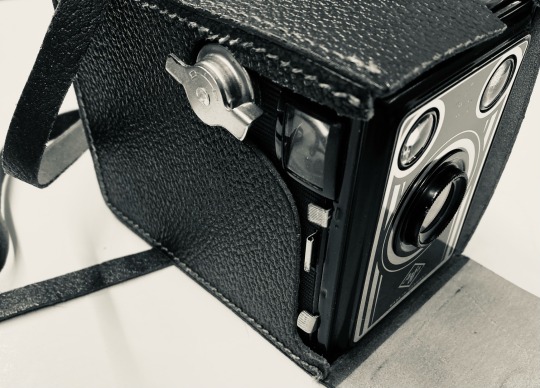
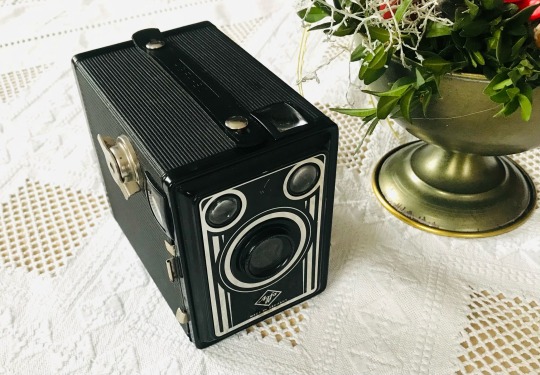





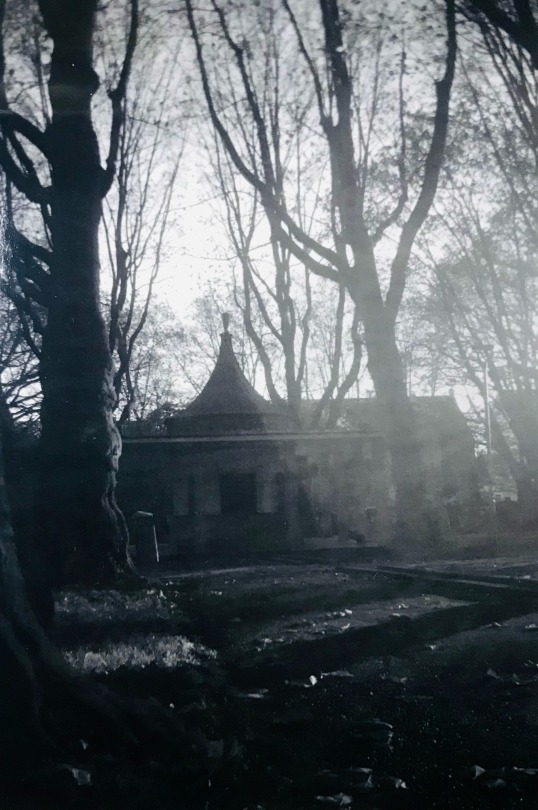
Those are some pics of my „Agfa Box“ from the 50‘s. The principle of the Box Camara is the most easy one, there‘s basically just one lens and a medium format film (I think it was invented by Kodak in the early 20th century). Today it‘s possibly the most unconventional way to take pictures, but even though the results aren’t perfect, i just love it 😅.
I added some of them to give you an example, but I will load up some more of them on my separate film photography blog ( fabio-271205 ) later this week!
#50s#film camera#medium format#agfa#agfaphoto#agfa box#box camera#film photography#camera#1950s#vintage aesthetic#black and white#vintage photography#old school cool#medium format film#gothic
34 notes
·
View notes
Text

exploring the neighborhood with an old box camera. a gay fetish club in hamburg, germany.
9 notes
·
View notes
Text

Scene from Whalley / Surrey, BC 🗃Shot on a 1950s Coronet F-20 Box camera I picked up on Prince Edward Island. 🎞 Ilford HP5 Plus 120
#surreybc#ilford#film#filming#film camera#35mm#35mm black and white#35mm color film#black and white#box camera
3 notes
·
View notes
Text
Look at this guy! My first box camera. Marvel s-20 made by ansco for sears in the 30s and 40s. There's really not a whole lot of information out there about it that I can find. It does take 120 film so I do plan on putting a roll through it someday. The styling is so great!

2 notes
·
View notes
Text
One man's trash ...
One man’s trash …
Hi, my name’s Tone and I’m a cameraholic.
On a quick visit to the Hobart Resource Centre (local tip shop) the other day, I made a bee line for my favourite cabinet – an old glass-door fridge where the keep the camera gear. I check it every few weeks, often leaving empty handed.
To my absolute delight, this dusty trio of old box camera’s stared back at me, looking for a new home. They spoke to…

View On WordPress
#Box Brownie#Box camera#camera#collecter#collection#Coronet D20#Flash III#Kodak#Six-20 Model C#vintage
2 notes
·
View notes
Text
Box Camera Made of Clay

View On WordPress
#art#artist#Box Camera#C+F#camera#Cameras#Cameras and Films#Cameras+Films#clay#earthenware#Fred Bauer#glazed#Photography#sculpture
0 notes
Text
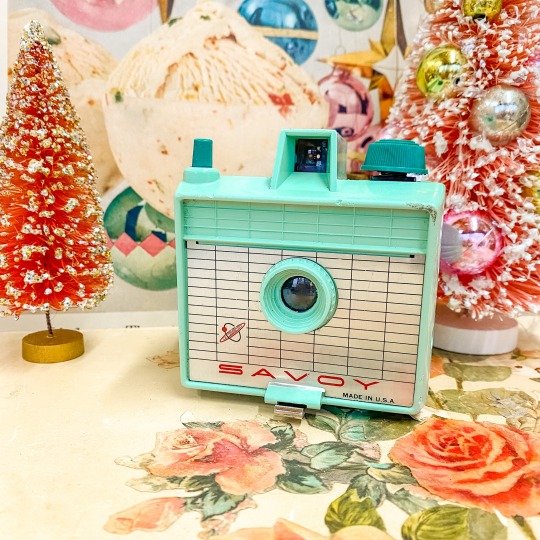
0 notes
Text

Box camera photography (No. 2 Portrait Brownie)
#box camera#portrait brownie#kodak#film photography#winter#meadow#herons#snow#birds#original photographers#lensblr#imiging
25 notes
·
View notes
Text
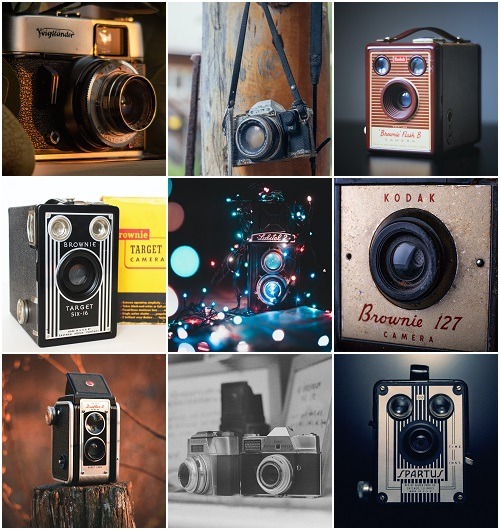
Objects: Old Fashioned Cameras (1/?)
Photography takes an instant out of time, altering life by holding it still.
#dorothea lange#camera#cameras#old camera#old cameras#box camera#kodak#Kodak camera#Kodak brownie#photography#photographer#photography aesthetic#camera accessories#Camera aesthetic#Camera moodboard#Object aesthetic#Object moodboard#moodboard#aesthetic#camera equipment#vintage#vintage aesthetic
20 notes
·
View notes
Text

reflections
cyanotype contact print, shot on Shanghai GP3 100 in a Kodak Brownie Flash II
#analog#film#film photography#photography#shoot film#monochrome#620 film#contact print#cyanotype#urban photography#shanghai gp3#kodak brownie#box camera
6 notes
·
View notes
Text

Today's poem: Camera, by Sanford Weiss
0 notes
Photo
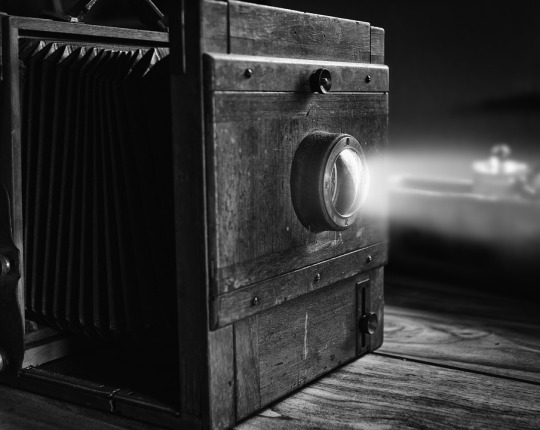
History of Camera – From Camera Obscura to SLR
The history of the camera is a fascinating journey that dates back to the earliest days of human civilization. From the simple pinhole cameras used by the ancient Greeks to the sophisticated digital cameras of today, the evolution of the camera is a story of innovation, creativity, and technological progress. In this article, we'll explore the rich history of the camera, tracing its development from the camera obscura to the modern single-lens reflex (SLR) camera.
Camera Obscura: The Beginnings of Photography
The camera obscura is widely considered to be the earliest form of photographic technology. This device, which was used primarily for drawing and painting, consisted of a darkened room or box with a small hole in one wall. Light from the outside world would pass through the hole and project an inverted image of the outside world onto a flat surface inside the box.
While the camera obscura was not used for photographic purposes, it did inspire the development of early photographic technology. In fact, the term "camera" is derived from the Latin word for "room," which is a reference to the camera obscura.
Heliography: The First Photograph
The first true photograph was produced in 1826 by French inventor Joseph Nicéphore Niépce. Using a process he called heliography, Niépce was able to produce a permanent image by exposing a plate coated with a light-sensitive material to light for an extended period of time. The resulting image was a blurry black and white representation of a rooftop view, which required an eight-hour exposure time.
Daguerreotype: The First Practical Photographic Process
The daguerreotype, developed by Louis Daguerre in 1837, was the first practical photographic process. This method produced a detailed, high-quality image on a polished silver-plated copper sheet. The daguerreotype quickly became popular for portraiture, and it remained the primary photographic process until the 1850s.
Calotype, Wet Plate Collodion, and Dry Plate Processes
In the years that followed the introduction of the daguerreotype, a number of other photographic processes were developed. These included the calotype, which used a paper negative to produce a positive print; the wet plate collodion process, which used a glass plate coated with a light-sensitive emulsion; and the dry plate process, which used a glass plate coated with a dry, light-sensitive emulsion.
These advances in technology made photography more accessible and practical for a wider range of applications. By the late 1800s, photography had become a popular hobby, and a number of different camera designs had emerged.
Box Camera, Folding Camera, and Rangefinder Camera
The box camera, introduced in the late 1800s, was a simple, lightweight camera that used roll film. This camera was affordable and easy to use, making it popular among amateur photographers.
The folding camera, introduced in the early 1900s, was similar to the box camera but had a more sophisticated design that allowed for greater flexibility and mobility.
The rangefinder camera, which was introduced in the 1920s, was a more advanced camera that used a system of mirrors to allow the photographer to view the scene through a separate viewfinder. This design provided greater accuracy and allowed for more precise focusing.
Single-Lens Reflex (SLR) Camera: A New Era in Photography
In 1948, the first single-lens reflex (SLR) camera was introduced. This camera design allowed photographers to see the scene through the lens, providing a more accurate preview of the final image. The SLR design also allowed for greater control over depth of field, which is the area of the image that is in sharp focus.
Over the years, SLR cameras continued to evolve, with advancements in technology leading to improvements in image quality, speed, and ease of use. One major development was the introduction of autofocus in the 1970s, which greatly improved the speed and accuracy of focusing.
In the 1990s, digital SLR cameras were introduced, which replaced film with digital sensors for capturing images. This technology revolutionized photography, allowing for immediate image review, editing, and sharing. Digital SLR cameras also allowed for greater flexibility and control over image settings, such as ISO, shutter speed, and aperture.
Today, digital SLR cameras are used for a wide range of applications, including professional photography, journalism, scientific research, and personal use. They continue to evolve with new features, such as high-speed shooting, 4K video recording, and wireless connectivity.
Impact of Camera Technology on Society
The development of camera technology has had a profound impact on society, influencing the way we see and interact with the world. Photography has become an integral part of our lives, capturing important moments, documenting history, and providing a means of creative expression.
Photography has also played a key role in journalism and documentary filmmaking, allowing for a visual record of events and issues around the world. In some cases, photography has been instrumental in bringing attention to social and political issues and driving change.
In addition to its cultural and social impact, camera technology has also had a significant economic impact. The photography industry has generated billions of dollars in revenue and provided jobs for millions of people around the world.
Conclusion
The history of the camera is a testament to human ingenuity and creativity. From the camera obscura to the digital SLR camera, each innovation in camera technology has built upon the last, leading to new possibilities for capturing and sharing images.
As technology continues to evolve, it's likely that we'll see even more advancements in camera technology, with new features and capabilities that we can't even imagine today. But no matter how much camera technology changes, one thing is certain: photography will continue to play a vital role in our lives and in society as a whole.
Source: History of Camera – From Camera Obscura to SLR
#camera history#camera obscura#heliography#calotype#daguerreotype#box camera#Folding Camera#slr#single-lens reflex#dslr
0 notes
Text

Surrey SkyTrain faintly captured on an antique Coronet F-20 Box Camera on Ilford HP5 Plus 120 Black & White film.
#film#film is alive#black and white film#ilforhp5#ilford#box camera#antique camera#surreybc#120 film
0 notes